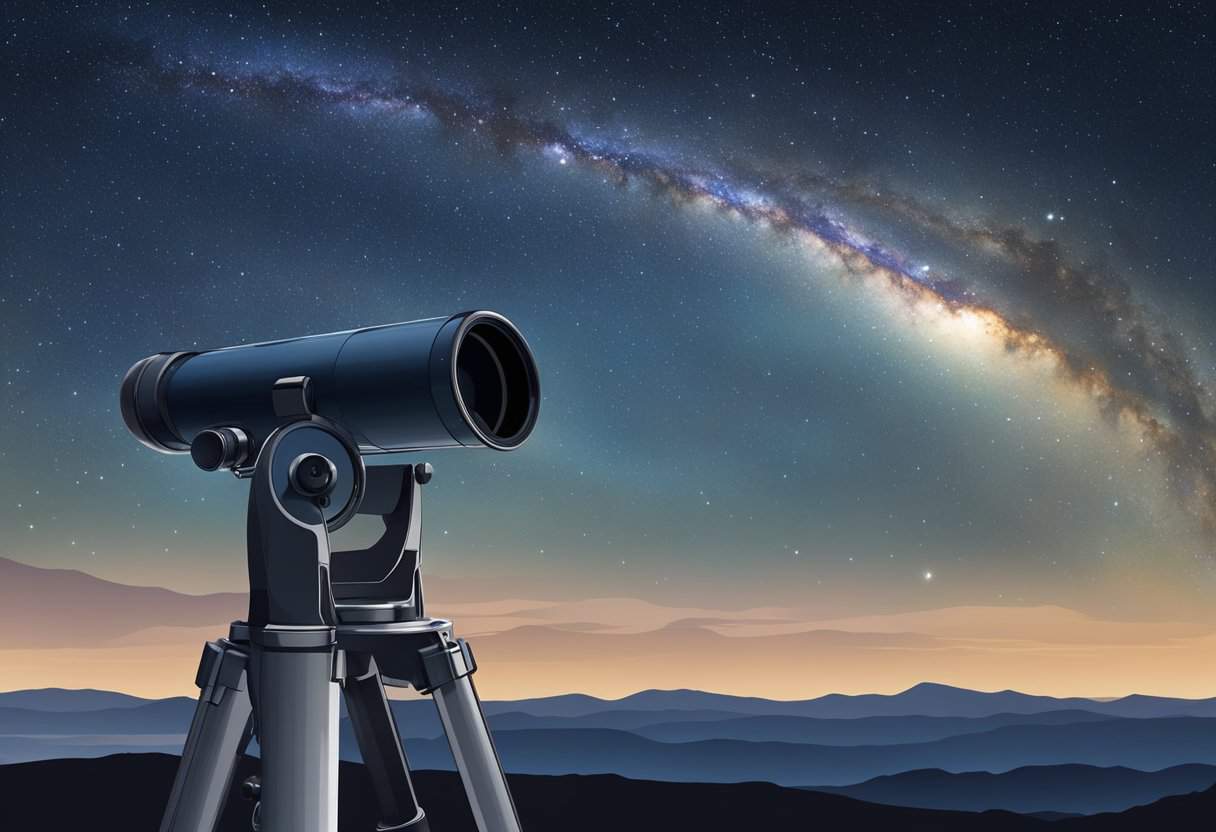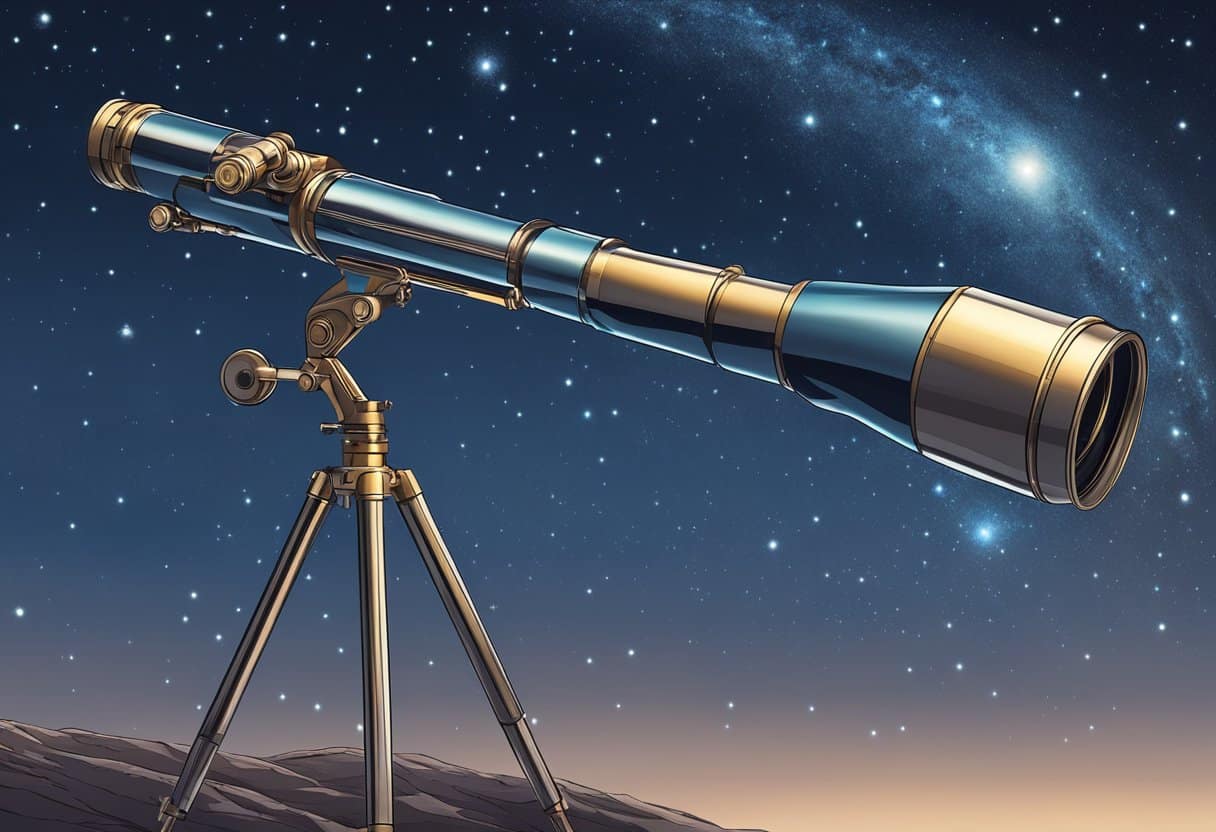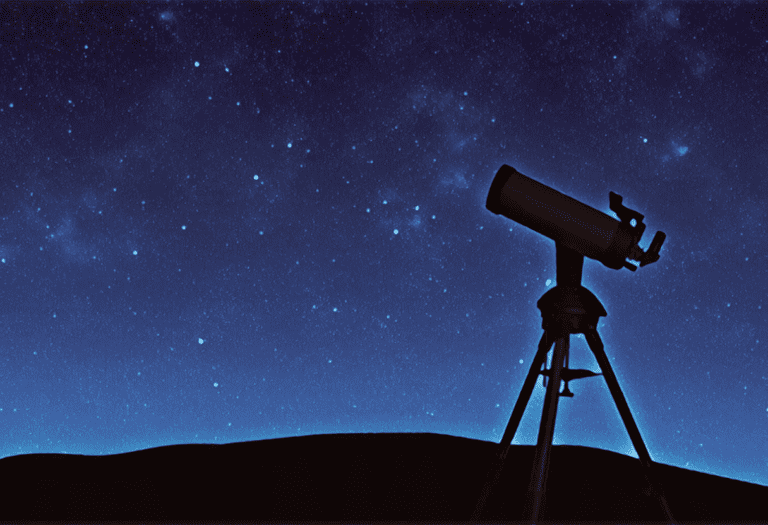If you’re an astronomy enthusiast or just someone who loves looking up at the night sky, you might have wondered how good of a telescope you need to see the Andromeda Galaxy.
Also known as M31, Andromeda is the closest galaxy to our Milky Way and is visible to the naked eye in dark skies. However, if you want to observe it in more detail, you’ll need a telescope. But how powerful does it have to be?
Understanding telescope specifications is key to figuring out how good of a telescope you need to see Andromeda. The most important specification is the telescope’s aperture, which is the diameter of its main optical component, usually a mirror or lens. A larger aperture allows more light to enter the telescope, providing a brighter and clearer image. Other factors to consider include the telescope’s focal length, magnification, and mount.
Observing Andromeda can be a rewarding experience, but it requires the right equipment and location. Even with a powerful telescope, light pollution can greatly affect the quality of your observations.
Additionally, Andromeda is best observed during the fall and winter months in the Northern Hemisphere. With the right telescope and conditions, you can see Andromeda’s spiral arms, bright core, and even its satellite galaxies.
To observe the Andromeda Galaxy in detail, a telescope with a minimum 70mm aperture is recommended, enhancing visibility of its core and potentially its spiral arms and dust lanes in darker skies. Optimal viewing is during fall and winter in the Northern Hemisphere.
Understanding Telescope Specifications
When considering purchasing a telescope to view Andromeda, there are several key specifications to keep in mind. In this section, I will explain the importance of the aperture size, magnification and resolution, and mount stability.
Aperture Size
The aperture size of a telescope is the diameter of its primary lens or mirror. It determines the amount of light the telescope can gather and therefore affects the telescope’s ability to see faint objects like Andromeda. Generally, the larger the aperture size, the better the telescope’s light-gathering ability and the more detailed the image it can produce.
Magnification and Resolution
Magnification is the degree to which a telescope can enlarge an object. However, it is important to note that magnification alone does not determine the quality of the image. The resolution, or the ability to distinguish fine details, is also important. A telescope with high magnification but low resolution will produce a blurry image.
It is also worth noting that high magnification requires a stable mount to prevent the image from shaking or vibrating.
Mount Stability
The mount stability of a telescope is crucial for producing clear, steady images. A shaky mount can cause the image to vibrate or blur, making it difficult to observe objects like Andromeda. A stable mount can also support higher magnification, allowing for more detailed images.
In summary, when considering purchasing a telescope to view Andromeda, it is important to prioritize aperture size, magnification and resolution, and mount stability. A larger aperture size will allow for better light-gathering ability, while high magnification and resolution require a stable mount.
Observing Andromeda
As a stargazer, observing Andromeda can be a thrilling experience. Andromeda is a spiral galaxy that is visible to the naked eye in the Northern Hemisphere. In this section, I will share some tips on how to observe Andromeda and what equipment you need.
Best Time to View Andromeda
Andromeda is best viewed during the fall and winter months when it is high in the sky. The best time to view Andromeda is during a new moon when the sky is the darkest. It is also important to find a location away from city lights to reduce light pollution and improve visibility.
Locating Andromeda in the Sky
Andromeda is located in the constellation Andromeda and is visible in the northeast sky. To locate Andromeda, find the Great Square of Pegasus and look to the northeast corner. Andromeda is the faint fuzzy patch that is visible to the naked eye.
Telescope Adjustments for Optimal Viewing
To see Andromeda in detail, a telescope is required. The size of the telescope required depends on the level of detail you want to see. A small telescope with a 2-inch aperture can show the bright core of Andromeda, but a larger telescope with a 6-inch aperture or larger is needed to see the spiral arms and dust lanes.
To optimize viewing, adjust the focus and magnification of the telescope. The best magnification for viewing Andromeda is between 50x and 100x. Additionally, using a filter can help to reduce light pollution and improve contrast.
Observing Andromeda can be a rewarding experience for stargazers. With the right equipment and location, you can see the beauty of this spiral galaxy.
Frequently Asked Questions

What are the minimum telescope specifications to observe the Andromeda Galaxy?
To observe the Andromeda Galaxy, a telescope with an aperture of at least 70mm is recommended. The aperture is the diameter of the lens or mirror that collects light, and the larger the aperture, the more light the telescope can gather. A telescope with a larger aperture will provide a brighter and clearer image of the Andromeda Galaxy.
Is it possible to view the Andromeda Galaxy with the naked eye from Earth?
Yes, it is possible to view the Andromeda Galaxy with the naked eye from a dark location. The Andromeda Galaxy is one of the brightest objects in the night sky and can be seen as a faint smudge of light in the constellation Andromeda. However, observing the galaxy with the naked eye will not provide as much detail as viewing it through a telescope.
What is the best time of year to observe the Andromeda Galaxy from the northern hemisphere?
The best time of year to observe the Andromeda Galaxy from the northern hemisphere is during the fall and winter months. During these months, the galaxy is visible in the evening sky and is at its highest point in the sky around midnight.
At what magnification levels can the Andromeda Galaxy be clearly seen?
The Andromeda Galaxy can be clearly seen at magnifications ranging from 25x to 50x. Higher magnifications may make the galaxy appear larger, but they can also make the image appear dimmer and less clear.
How does the Andromeda Galaxy appear when viewed through binoculars?
When viewed through binoculars, the Andromeda Galaxy appears as a fuzzy patch of light with a brighter center. Binoculars with larger lenses will provide a brighter and clearer image of the galaxy.
What kind of telescope is recommended for a clear view of the Andromeda Galaxy?
A refracting or reflecting telescope with an aperture of at least 70mm is recommended for a clear view of the Andromeda Galaxy. A telescope with a larger aperture will provide a brighter and clearer image of the galaxy. A telescope with a motorized mount can also be helpful for tracking the galaxy as it moves across the sky.







